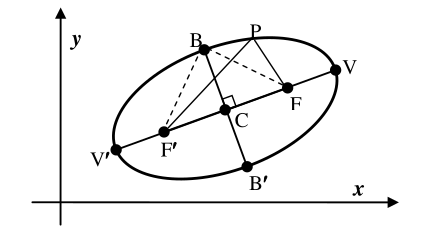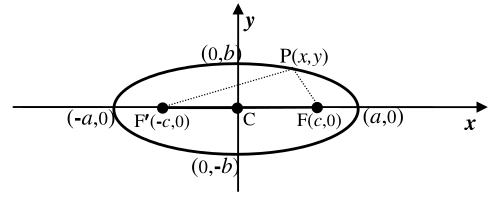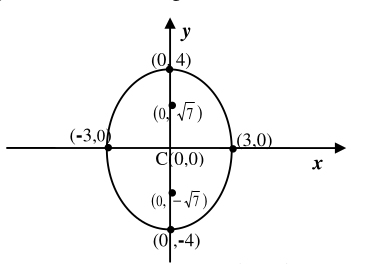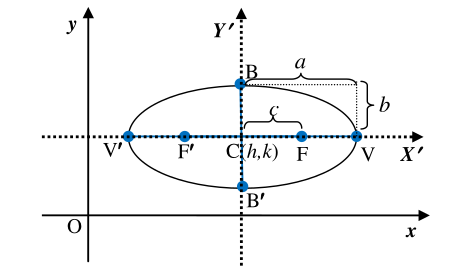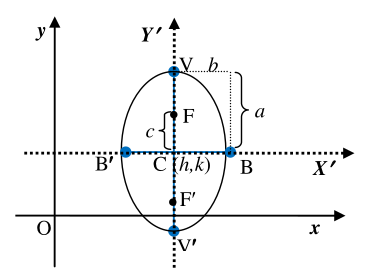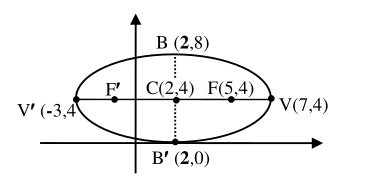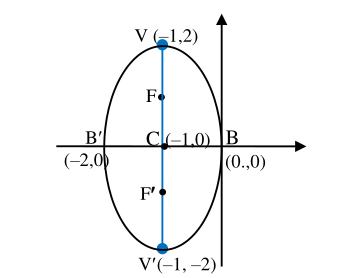The given vertices are at
\(V′(-3,4)\) and
\(V(7,4)\) implies that
\(2a = |V′V| = 10 ⇒ a = 5\text{;}\)
and the center C(
h,k) is the midpoint of
\(V′V ⇒ (h,k) = (\frac{-3+7}{2}, \frac{4+4}{2}) = (2,4) \text{.}\)
Moreover, eccentricity
\(= \frac{c}{a} = 0.6 ⇒ c= 5 \times 0.6 = 3\text{.}\)
Hence,
\(b^2 = a^2-c^2 = 25 - 9 = 16\text{.}\) Note that the major axis V’V is horizontal.
Therefore, using the standard equation of a horizontal ellipse, the equation of the ellipse is
\(\quad\quad\quad\frac{(x-2)^2}{25} + \frac{(y-4)^2}{16} = 1\)
Now, as the center (
h,k) =
\((2,4)\text{,}\) c=3 and V′V is horizontal, the foci are at (
h ±
c,
k) =
\((2 ± 3, 4)\text{.}\)
That is, the foci are at F
′(-1, 4) and F(5, 4).
Moreover, the endpoints of major axis are at
\((h,k±b) =(2, 4± 4) ⇒ B′=(2,0)\) and
\(B=(2,8). \)
The graph of the ellipse is sketched in Figure 4.22.
Figure 4.22: Example ellipse
